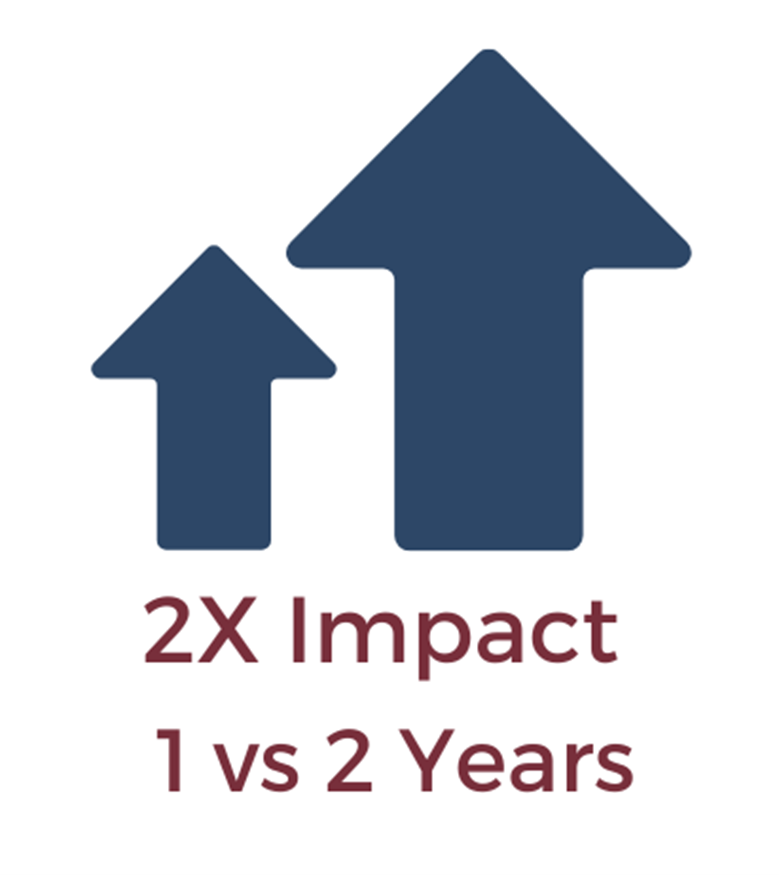Spotlight Maryland: Science of reading transforms literacy
Here we take an in-depth look at the Wicomico School District in Maryland, whose leadership and literacy team worked together to transform their approach to reading instruction. They saw, in return, strong student improvement. One changemaker, Dr. Renee R. Hall, offers tips for other educators on advancing literacy in their school or district.

Student snapshot
- Grades: Kindergarten to Second Grades
- Size: 498 students
- 54% Black/African American
- 8% Special Education
- 15% English Language Learners
- 75% Economic Disadvantage
The challenge: Opportunity gap
During the pandemic, the opportunity gap between advantaged and disadvantaged students’ literacy skills widened. National reporting revealed that the gap in students reading on grade level had grown by 3 points from before the pandemic to fall 2021. For Wicomico County Public Schools, the gap had grown even more significantly during that same time period—to eight times greater than the national average for first grade students. Wicomico County is a geographically and demographically diverse school district in Maryland that had received $47.4 Million in ESSER Funds to support recovery from the pandemic (Edunomics Lab at Georgetown, 2022). Estimates from Georgetown University indicate that students at Wicomico lost an average of 15 weeks of learning in reading from spring 2020 to spring 2021.
Solutions
- Tier 1 Phonics: 95 Phonics Core Program®
- Tier 2: 95 Phonics Chip Kit™
- Tier 3: 95 Phonological Awareness Lessons Deluxe™ & 95 Phonics Lesson Library™
- Assessments: 95 Phonological Awareness Screener™ for Intervention, 95 Phonics Screener for Intervention™
District leaders, in partnership with the literacy team, took swift and decisive action. They all participated in professional learning on the science of reading and then decided to pilot 95 Percent Group’s products from the company’s Literacy Ecosystem in one elementary school (a school that has grades K-1 only) during the 2020-2021 school year. Based upon the results, they subsequently rolled out these products to all of their schools in 2021-2022, including 17 elementary schools. In 2022-2023, they continue to rely on 95 Percent Group products and even expanded their ecosystem to include additional resources: Multisyllable Routine Cards Package™, 95 Vocabulary Surge™, 95 Comprehension Toolkit™, 95 Teaching Blending®, and 95 Phonics Skills Series Short Vowels™.
A story of reading progress
When Renee Hall, supervisor of reading K-5, joined Wicomico County Public Schools, the literacy team had been using a variety of literacy products for their intervention offerings. Reading was a deficit for many of their students, and getting the right, phonics-based instruction in place was a priority. So they took one of the best next steps that educators can take (and often do so well): Learn from one another.
“We were struggling with moving our students forward using the tools we had. We had heard about a neighboring district who was using 95 Percent Group products and visited their classrooms to see it in action,” she said. “It was terrific to see what strong intervention really looks like.”
95 Percent Group’s One95® Literacy Ecosystem® is a cohesive suite of resources and professional learning services that is aligned with the science of reading and evidence-based. Recently the company’s flagship product, 95 Phonics Core Program, earned a listing on the highly regarded Evidence for ESSA website, and overall the company’s range of products have met a high level of rigorous federal standards under the Every Student Succeeds Act (ESSA) act.

What implementation results look like
Wicomico initially piloted 95 Percent Group products during a hybrid school environment in 2020-2021. The school team had started the pandemic school year worried that it would be a very challenging year to try anything new like this.
“We thought the challenging school year would reap low performance in reading, no matter what we tried. But we were very pleasantly surprised,” said Hall. “We saw strong progress and continue to see strong performance in student literacy scores.”
The district subsequently rolled out the products to all schools the following year in 2021-2022, based upon impressive results and satisfaction with the products overall. Independent efficacy studies conducted during two years demonstrated that the impact of using 95 Percent Group products (the treatment group) was twice the magnitude of the comparison group who used other literacy tools during 2020-2021, with effect sizes of .64 and .31 respectively. (Read the efficacy reports on Grades K-1 and Grades 2-3.) Notably the Kindergartners in the treatment group saw a substantial increase of 5.5 points on their literacy scores during hybrid learning. Results from 2021-2022 demonstrated that the treatment group outperformed the comparison school group in both grades.
Today Hall is focused on keeping up the momentum. At the beginning of the 2022-2023 school year, Hall and her colleagues gave students the iReady diagnostic tests and were impressed with results from their original, pilot elementary school school in particular.
“Students had made strong progress and did not even have the summer slide that we thought they may,” she said.
Why a Literacy Ecosystem? Coherence, alignment, acceleration
For Wicomico, the use of multiple products from the One95® Literacy Ecosystem®, across tiers of instruction, helped bring important efficiencies for students and educators that catalyzed student progress.
“We love that, no matter what a student needs or where they are in their reading, they learn in the same instructional routines with One95 products,” she said. “Our kids are part of whole-class instruction with 95 Phonics Core Program and then, if they need more focused help, they use the intervention materials that employ the same methods. For students, this connected experience is so much smoother. It’s like being able to talk in the same language.”
Hall also commented on the benefits of the assessments, the 95 Phonological Awareness Screener™ for Intervention and the 95 Phonics Screener for Intervention™, which help teachers pinpoint exactly where the student is with their literacy skills. Teachers can then map a student’s needs directly to which resource and which lesson each student needs to work on.
“For years we had talked about intervention that is personalized and that truly meets the needs of student deficits. And this does,” she said.
She also appreciates that teachers have trust in what they’re using, knowing their approach and materials have been proven to help accelerate the development of literacy skills.
“Knowing these resources are aligned with the science of reading gives our teachers great confidence in their instructional methods,” she said. “I hear all the time from our teachers how excited they are about how much progress our kids are making.
One veteran teacher in particular turned from a skeptic to believer.
“One of our second-grade teachers was really hesitant at first,” said Hall. “But as she got into the instructional method, she fell in love with it and clearly saw her students make substantial progress. She now says—don’t you dare take this away!”
Three tips for educators
For her colleagues in other schools, Hall has three tips:
- Focus on providing strong professional learning for all of your K-3 teachers and try to personalize it. Meet the needs of the teachers where they are, just as you do for your students. Also educate your administrators. This change requires leadership’s understanding of the science of reading and science of learning too.
- Look at your state funding. You probably have the funding you need to make this change and support it well.
- Put your trust in the science and don’t look back. In our district, I see phonics being taught from here on. This is a long-term change, and it’s so worth it.
Learn more
Are you interested in learning more about Wicomico County Publlic School’s story? Watch our on-demand webinar now: “What is a Phonics Ecosystem & Why Does it Matter?” Laura Stewart, Chief Academic Officer, and Joni Maville, director, content development, join Renee Hall, supervisor of K-5 Reading, and Barbara Karsnitz, second grade teacher with Wicomico County Public Schools in Maryland, to share their literacy success story.
About Dr. Renee R. Hall
Dr. Renee R. Hall is the supervisor of reading and media (K-5) for Wicomico County Public Schools, overseeing the ELA curriculum in the 17 elementary schools. With a passion for reading and student achievement, she has served in this role for five years. She has been a building leader as a principal and assistant principal at various schools in Wicomico County for 14 years. Prior to Wicomico County, she was an instructional coach, facilitator and classroom teacher in Dorchester and Queen Anne’s County. Dr. Hall completed her undergraduate work at Salisbury University receiving a Bachelor’s degree in Elementary Education. She returned to Salisbury University to complete her Master’s degree in Educational Administration. Finally, she accomplished her doctoral degree in Educational Leadership at University of Maryland Eastern Shore. Dr. Hall and her husband, Josh, are the proud parents of three boys, Mason, Parker and Landry.



